In kitchens and bathrooms, the selection of finishing materials is crucial for combining aesthetics, functionality, and durability. These spaces, subject to humidity and frequent use, necessitate resistant and easy-to-maintain materials. Among the most popular options are ceramic, porcelain, marble, quartz, and glass. Each of these coverings presents unique characteristics. These characteristics thereby influence the atmosphere and practicality of these key areas within the home.
The selection of finishing materials, a crucial step of the project.
Finishing materials often used in kitchens and bathrooms:
Ceramic
- Ceramic is easily recognizable, whether it’s white or red clay, because the top is generally not the same color as the underside. Therefore, if it chips, the break will be visible.
- Due to the manufacturing process, which includes molding and firing clay, the dimensions of the tiles can vary slightly. It is therefore important to leave joints of at least 1/8 inch.
- Ceramic tile formats are more limited than those available for porcelain.
- With a more affordable purchase price, it is suitable for tighter budgets for kitchen and bathroom renovations.
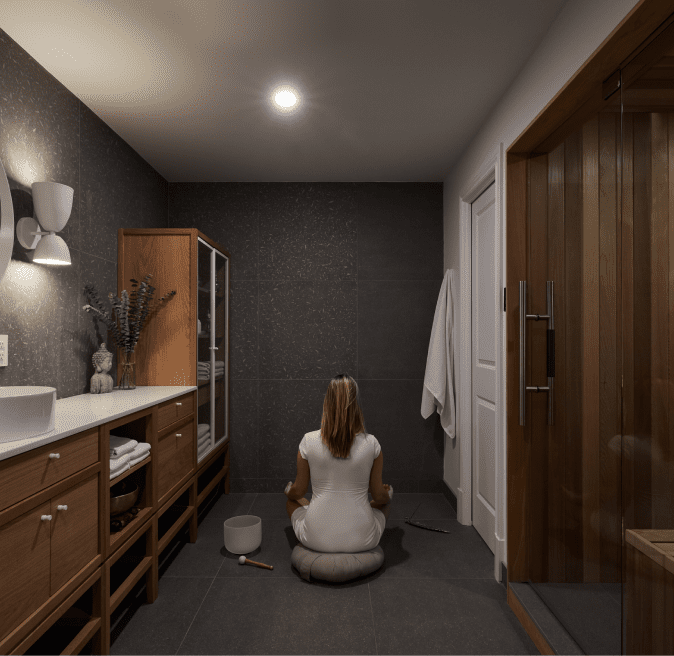
Porcelain
- Made of stoneware, the tile offers a more uniform color between the surface and the underside. This is an advantage because chips will be less noticeable.
- It offers better quality finishes and textures, making the imitations very true to reality.
- Porcelain is often rectified, meaning it is cut very precisely. This minimizes variations in dimensions between tiles, allowing the use of thinner grout joints, as small as 1/16 inch.
- It offers the advantage of being very resistant to temperature changes. This is why it can be used without any problems in a bathroom sauna or even for an outdoor kitchen.
Glass
- Glass is manufactured by mixing glass, whether it’s crushed, ground, or in powder form, with a resin.
- Glass brings a contemporary and elegant touch to the space. It can instantly modernize the appearance of a kitchen or bathroom.
- Glass is available in a wide range of colors, textures (sandblasted, frosted, etc.), and finishes, allowing for a customized look according to taste.
- Glass is generally easy to clean and maintain. A simple wipe with a sponge is often enough to make it spotless.
- Glass is a non-porous material, which makes it hygienic and easy to disinfect. It does not absorb odors or stains.
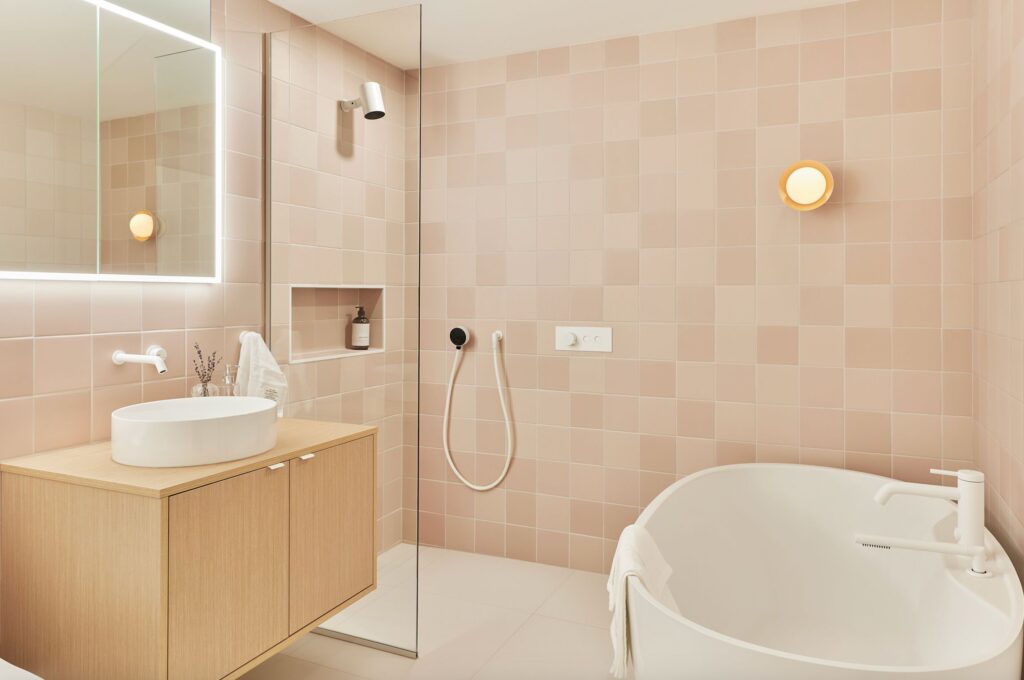
Slate
- Slate is a natural stone with varied colors, recognized for its durability, unique appearance, and impermeability, making it a good choice for a bathroom or kitchen.
- Slate comes in a wide variety of colors, ranging from deep black to grays, as well as shades of green, purple, and sometimes even orange or rust tones. The color can vary considerably from one quarry to another and even within the same block of stone.
- It is a relatively hard and resistant stone, which makes it durable and able to withstand the wear and tear of time.
- Slate is naturally waterproof, making it ideal for applications in wet areas such as bathrooms and kitchens.
- It is characterized by its generally fine and layered texture, which gives it a distinctive stratified appearance.
Marble
- Marble is a metamorphic natural stone that forms from limestone under the effect of heat and intense pressure within the Earth’s crust.
- Marble is renowned for its luxurious and elegant appearance.
- It comes in a wide variety of colors (white, black, gray, pink, green, etc.) with distinctive veining that gives it a unique character.
- It can have a smooth and polished texture, or it can be left with a more matte or textured finish.
- Although it can be more porous than some other types of stone, marble is a durable material that can withstand daily wear and tear if properly maintained and sealed.
- There are many types of marble, each with its own color and veining characteristics, originating from different regions around the world.
- Due to its sensitivity to stains and scratches, marble requires more regular and delicate maintenance than other materials. It is important to clean up spills quickly and use specific cleaning products for marble.
- Marble is generally a more expensive material than other options like quartz, granite and ceramic.

Quartz
- Quartz is a manufactured surface material, made from natural quartz (a very hard mineral) that is ground and mixed with resins, pigments, and other additives. It is then compacted under high pressure and heated to create solid, non-porous slabs.
- It offers a wide variety of appearances, ranging from solid surfaces to patterns that imitate marble, granite, or other natural stones.
- Unlike marble or granite, quartz is a non-porous material, meaning it does not absorb liquids.
- It is very resistant to scratches, stains, and impacts, making it an ideal material for high-use areas like kitchens.
- Its non-porous surface makes daily cleaning and maintenance easy.
- Its non-porous surface prevents the growth of bacteria and mold, which is important for hygiene in a kitchen and bathroom.
- Quartz can be used for countertops, shower shelves or surrounds, and even kitchen backsplashes.
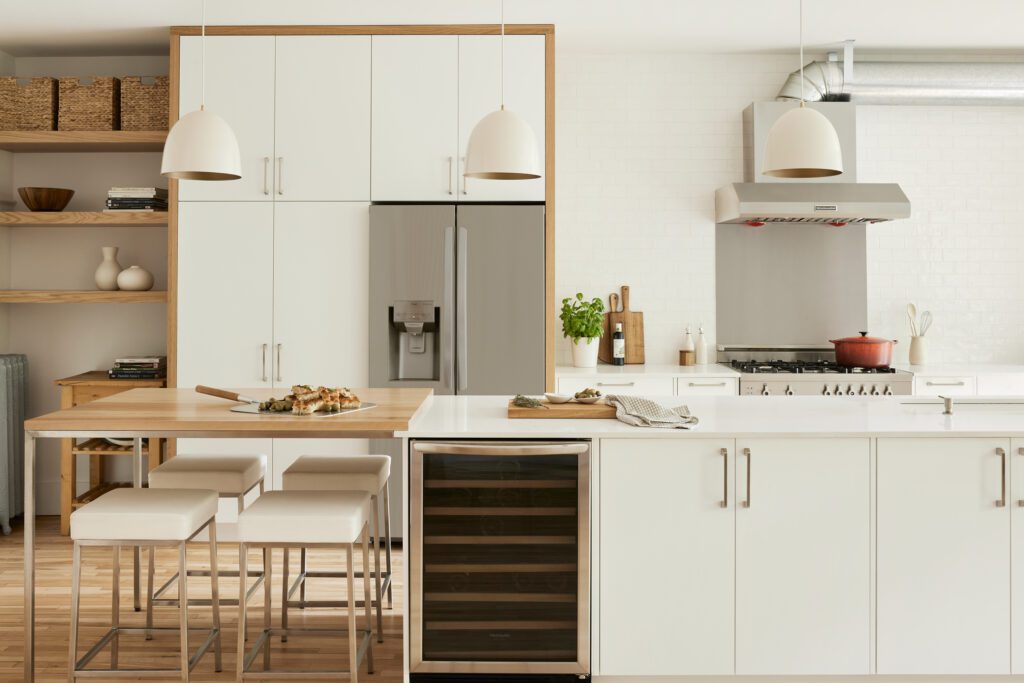
Types of Installation:
Aligned (or Straight Lay)
The aligned tile installation type (or straight lay) is the most classic and simplest method for installing tiles. In this type of installation, the tiles are arranged to form straight and parallel lines, both horizontally and vertically.

Staggered (or Offset Lay)
The staggered tile installation type (or offset lay, offset joint installation) is a method of installation where the vertical joints are not aligned from one row to the next. Each row of tiles is offset in relation to the previous row, creating a “brick-like” pattern.
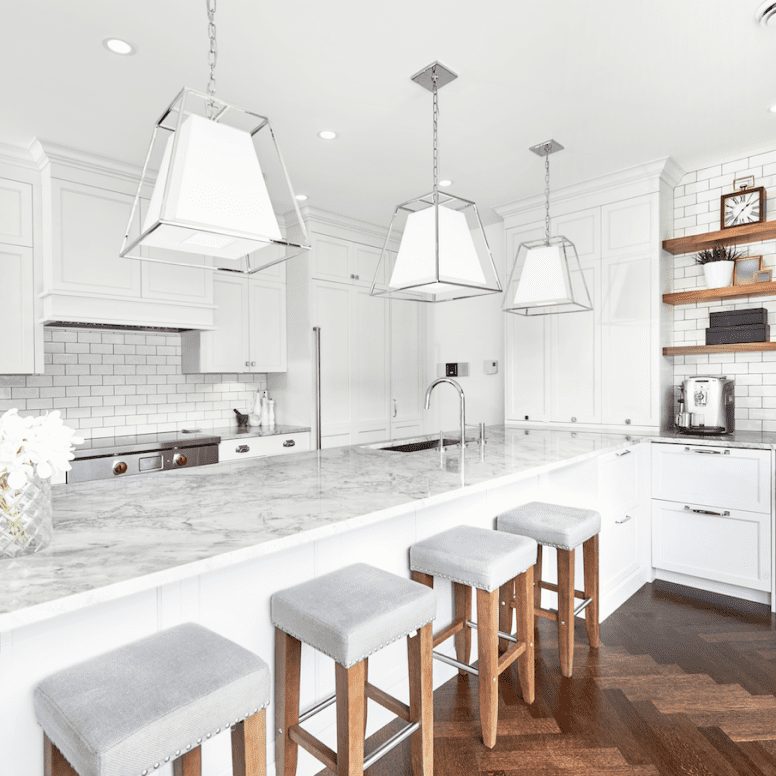
Diagonal
The diagonal tile installation type is a method where the tiles are arranged to be oriented at a 45-degree angle relative to the walls of the room. Instead of being parallel or perpendicular to the walls, the tiles follow a diagonal across the space.

Chevron
The tiles used for a chevron installation are cut at an angle on each end and are laid so that the angled ends meet to form a 90-degree angle, thus creating a “V” or arrow-like pattern.
Herringbone
The tiles used for a herringbone installation are standard rectangles, without any angled cuts, that are laid so that the ends of two tiles meet at a right angle, also forming a “V” pattern, but with straight joints between the ends. The appearance resembles the backbone of a fish.
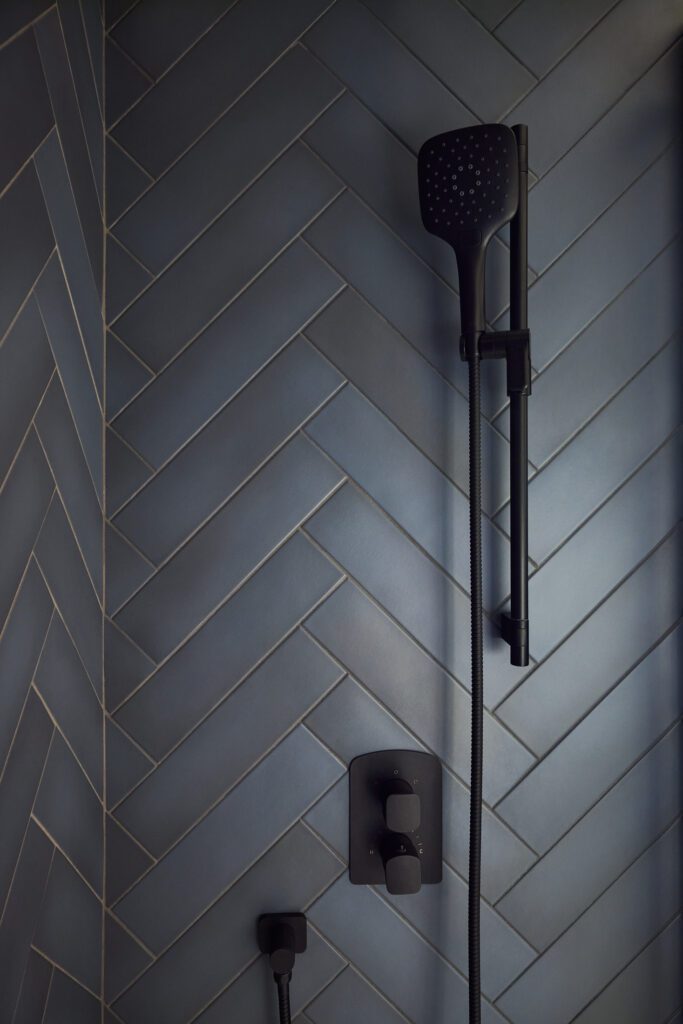
Mosaic
The mosaic tile installation type for ceramic refers to the use of small individual tiles (tesserae) that are usually assembled on a mesh or backing to form larger panels that are easier to handle and install. Mosaic offers great flexibility in terms of design. The small tesserae can be combined to create complex patterns, color gradients, images, or simply a textured appearance.
Ceramic represents an essential element in the realization and finishing of any renovation project. Our team is available to advise and guide you in choosing the type and installation of ceramic that will perfectly meet your requirements.


